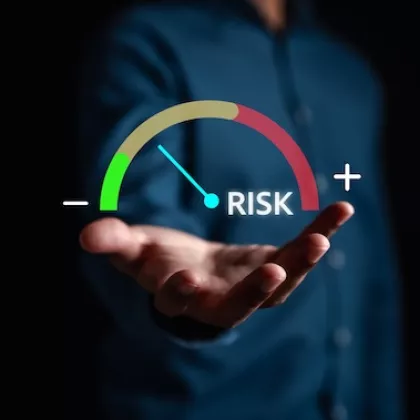Building the roadmap

Building the roadmap
September 14, 2022 | By Sevin Yeltekin
When Amanda Mari first joined a credit-focused alternative asset management firm called Benefit Street Partners in 2020, ESG wasn’t on her radar. With a strong background in alternative investments and finance, she initially served as the Vice President of Key Accounts and Strategic Relationships. In an unexpected turn of events, she rose to become the firm’s first Head of ESG in only a few short years.
In this Q&A, Mari reflects on the challenges and rewards of building an ESG division in the private credit and lending space.
Dean Yeltekin: What attracted you to ESG/responsible investment?
Mari: It was an opportunity I was happy to cultivate. I was working at Benefit Street Partners in a completely different function when I joined a project that required a third-party consultant to conduct ESG due diligence for our firm’s direct lending business. I worked with the consulting team on a daily basis to figure out how to accomplish this in a way that didn’t impede the operations of our investment team. That was the summer of 2020. The following winter, we began to notice a major uptick in ESG-related questions and interest from our investors. The sheer volume of communication demonstrated the value of expanding our ESG processes and policies, and the market environment was ideal. With buy-in from our leadership team, my work evolved into a full-time ESG role.
Dean Yeltekin: What are some of the hurdles you have encountered in your role as Head of ESG?
Mari: Without a doubt, the opportunity to build a roadmap that didn’t exist before is the most exciting and the most challenging aspect of the role. I moved into a functional space that was not only new for me, but new for most people. Even now, there are few true experts in ESG. Most of us are playing catch up in a space that’s in its infancy—or if not in its infancy, in its early childhood. At the outset, I had to master a sea of acronyms! ESG has its own language within different technical frameworks. It also took some time to understand how ESG applies in each of the areas of Benefit Street Partners: private debt/direct lending, special situations/distressed, structured credit, liquid loans and high-yield bonds, and commercial real estate. My job is to develop a firm-wide framework that guides how we raise our funds, while also deciding what is appropriate for each of our asset classes.
Dean Yeltekin: How do ESG rating systems factor into your work?
Mari: Many of the widely used rating platforms don’t cover the universe of companies we’re lending to in the private credit market, which makes it difficult to evaluate companies on the same playing field. For all the faults that different rating systems have, at least they attempt to be consistent in applying the same factors and measurements to different companies. Within our direct lending practice, we work with a consultant to develop our own system that evaluates companies in 11 qualitative areas. It’s tricky to decide on these categories. They have to be material to each company but universal enough to serve as a comparison tool. Then, after using this data to evaluate risk and opportunities for each of our portfolio companies, the next challenge is to aggregate the data to have a view of our portfolio and generate meaningful reporting. Fortunately, there are other efforts to drive data collection in the private equity and private lending spaces. The ESG Data Convergence Project, organized by the Institutional Limited Partners Association (ILPA), is one notable initiative geared toward collecting performance-based, comparable ESG data from private companies. This requires significant collaboration between private equity and private credit, but it is forward progress.
Dean Yeltekin: What are the primary differences between leading ESG efforts in private credit and lending versus private equity?
Mari: It’s a question of power versus influence. On the private credit and lending side, our rights and access to ESG-related data is limited, unlike our private equity counterparts. A simple analogy illustrates the difference: If you go to the bank seeking to refinance your mortgage loan, that bank will require financial information that demonstrates your ability to pay it back. But banks don’t have the ability to determine who is living in your house, how much energy you use, how much water you use, or how often you recycle. These questions are considered “off market” as a lender. In the same way, asking questions about ESG as a private lender is generally outside the scope of our practice, and it could even reduce our ability to become a competitive lender. Instead, we work with our consulting team to independently identify, evaluate, and mitigate risks related to ESG. We also wield influence by creating relationships with private equity sponsors who have similar objectives, and by participating in ESG frameworks that we’re all trying to move forward. Unlike the residential lending market example, I do expect commercial lenders to gain more access to this category of data, and it is already starting to happen.
Dean Yeltekin: What is the most significant ESG trend that you have spotted in private credit and lending in the past year?
Mari: One of the things that lenders are implementing are margin ratchets—the ability to adjust interest rates on a loan based on behavior. For example, a lender may evaluate a business that uses a lot of water, like a car wash business. Reducing overall water usage and using more recycled water will be good for the environment and good for the bottom line, and it will improve the overall sustainability of the business. In this kind of win-win situation, the lender might build metrics into the loan agreement. Say that for every 2% that the business incorporates recycled water, the lender will reduce their loan by five basis points and review annually. That is one way to influence the company’s behavior. Some wonder if reducing interest rates through margin ratchets does a disservice to our investors, but there are several arguments on the other side. If you help a business improve its operations, it ensures better outcomes in loan repayment. And if the market of investors investing in private credit is already driving toward ESG, it will prioritize investing in companies that share their goals.
Only one or two lenders in the U.S. have introduced margin ratchets, but this has already become a more common practice in Europe. In the U.S. we’re about two years behind where Europe is now, so we can look across the pond to see what is coming next.
Dean Yeltekin: How can Simon Business School support the efforts of ESG practitioners?
Mari: It’s important to recognize that sustainability can generate value and opportunity in every industry, but it means something different in different contexts. Whether a course is focused on pricing, accounting, or operations management, I would challenge faculty and students to spend a considerable amount of time considering what sustainability means in each context. Those conversations are what spark innovation and drive change.

Sevin Yeltekin
Dean, Simon Business School

Amanda Mari, MBA’09, is the Head of ESG at Benefit Street Partners, a leading credit-focused alternative asset management firm.
Follow the Dean’s Corner blog for more expert commentary on timely topics in business, economics, policy, and management education. To view other blogs in this series, visit the Dean's Corner Main Page.











